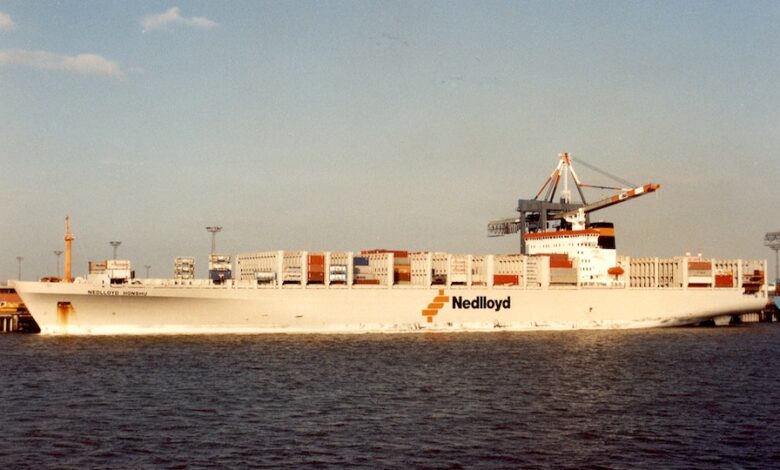Hyundai Heavy’s new hatchless design rekindles memories of Nedlloyd’s ships from the 1990s

News that South Korea’s Hyundai Heavy Industries (HHI) has developed a boxship design which requires no lashings or hatch covers has had container experts delving into the archives to question whether this new ship type will gain traction.
HHI has removed the lashing bridge and hatch cover in its new design, which has been approved by both ABS and the Liberian Registry. Instead, the yard has developed a device called a portable bench which receives the load of the containers on the deck and transfers it to the hull. The company has extended the cell guide, which enables vertical stacking of containers, to the deck. The containers on top of the deck are fixed by the extended cell guide, eliminating the need for lashing.
In the mid-1990s hatchless container vessels made a brief entrance into the world fleet with Nedlloyd, Matson and Norasia all operating them. Japanese shipyards led the promotion of this new design. However, the experiment proved short-lived.
No hatch-covers resulted in huge water ingress and the natural parabolic curve of a crane working containers on deck was destroyed. Moreover productivity dipped because of the increased crane cycle times as every container had to be lifted over the higher sides of these unique vessels. Another drawback concerned the stack heights, with the bottom container having to support the weight of up to 12 boxes stacked onto it, creating an additional constraint in stowage plans to avoid overloading bottom containers. In the end, Nedlloyd ended converting its seven hatchless ships, including the Nedlloyd Honshu (pictured), back to a conventional design.

Sam,
goodday,
Two errors in your newsreport.
1. The 7 Nedlloyd vessels were NOT changed to conventional design.
2. Water ingress from rain maybe, but the bow was made to prevent seawater from entering. And the bilges as well as the bilgepumps were big enough to deal with the rainwater